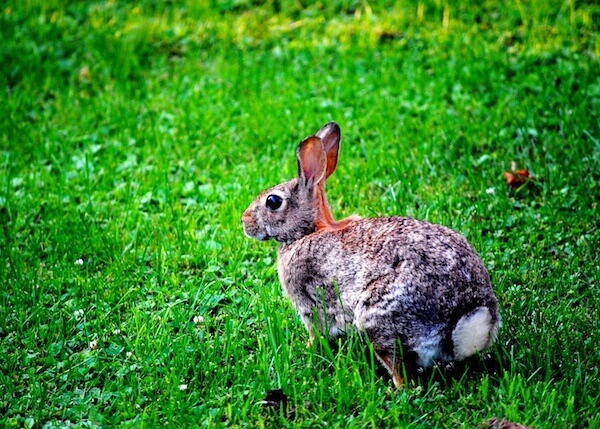
World Greener: Attracting Wildlife to Your Florida-Friendly Lawn
Keeping a Florida-Friendly lawn may seem difficult at first, but after doing some research and applying new techniques to your lawn maintenance, you’ll be the envy of the neighborhood in no time! In this week’s World Greener piece, we’ll be discussing how you can change up your landscaping to attract Florida-native animals to your backyard.
Landscaping to attract wildlife brings nature close by welcoming it into our backyards. Planting certain trees, shrubs, and flowers can create an inviting atmosphere for songbirds, butterflies, and other wildlife. Another advantage of landscaping for wildlife is creating habitat for animals that have been displaced by community growth and development where space is limited.
Add Islands of Vegetation: These can be planted with native groundcovers, wildflowers, or other vegetation. If possible, locate the islands so they are near each other. A group of islands reduces the amount of open space animals have to cross.
Plant a Butterfly Garden: For butterfly habitat, add plants for both the adult butterflies and their larvae (caterpillars); they often feed on different species of plants. Keep in mind that the food plants for larvae will be munched on and may look tattered at times. Another way to help butterflies is to create a small, bare area of moist sand in your yard. The butterflies sip water from the damp sand to obtain the needed salts and minerals (a behavior called puddling).
Increase Vertical Layering: Increasing plant structure between the ground and the tree canopy is called vertical layering. Planting a variety of vegetation in different sizes and heights provides more cover and feeding opportunities for wildlife species. Clumps (or islands) of native vegetation with plants of different heights are best.
Provide snags and brush piles: As trees become diseased or die, consider leaving them standing as snags for wildlife such as woodpeckers to use for feeding and nesting. A brush pile or two, especially if near other vegetation, will provide excellent cover and feeding opportunities for small mammals, birds, and butterflies. It will also serve as cover in open areas.
Provide water: Water is an essential part of productive wildlife habitats. Wildlife will benefit from any water source you provide, such as a birdbath or small pond. Ponds also attract a variety of amphibian and reptile species and add amphibian breeding habitat.
Plant native vegetation: Use native plant species in your yard whenever possible. Landscapes with plants that are native to Florida provide better food and cover for native wildlife, and require less care and resources to maintain than those with non-native plants. Native plants are better adapted to local soil conditions, generally do not require fertilizing, and are more resistant to natural pests and diseases.
Provide Bird/Bat Houses and Birdfeeders: Adding birdfeeders of different designs or with different seeds may increase the diversity of birds you can attract to your yard. Be sure to clean all feeders thoroughly, at least weekly during warm weather. Old or wet seeds can rot and make birds sick. Locating the feeders near cover (bushes, trees) is helpful for songbirds if they have to escape a predator, but keep the feeders at least fifteen feet away from vegetation so that squirrels cannot jump onto the feeder.
Remove non-native invasive plants: Non-native invasive plants aggressively take over natural habitats and can replace all the native vegetation. What we do in our individual yards can affect areas far beyond our yards. Once established, these non-native plants destroy wildlife habitat, resulting in areas with fewer plant species and fewer food and shelter opportunities for wildlife.
Manage pets: Non-native invasive plants aggressively take over natural habitats and can replace all the native vegetation. What we do in our individual yards can affect areas far beyond our yards. Once established, these non-native plants destroy wildlife habitat, resulting in areas with fewer plant species and fewer food and shelter opportunities for wildlife.
Reduce pesticide use: Anything you can do to reduce pesticide use in your yard will benefit wildlife. Most pesticides do not target one species or pest, but affect anything that comes into contact with the pesticides. By blanket-spraying your lawn, you are also killing beneficial insect species. Almost all wildlife species are connected to insects in some way. Even if they do not eat insects directly, their prey do!
As you can see, there are quite a few simple ways to make your backyard a safe haven for Florida’s many critters. You’re essentially providing wildlife with the opportunity to grow despite being displaced by growing communities. Finding a balance is important to maintaining a Florida-Friendly lawn.